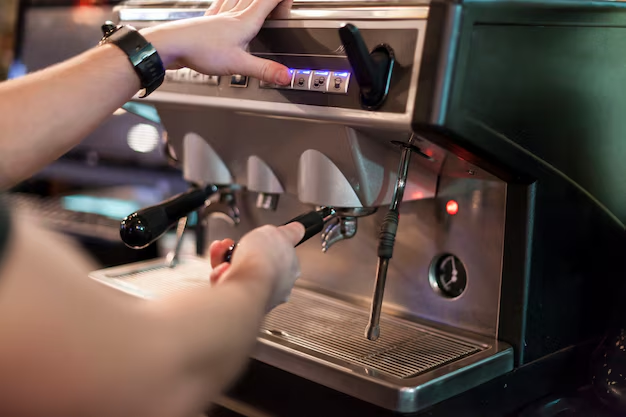Getting Your Kenmore Refrigerator Ice Maker Back in Working Order
It can be incredibly frustrating to open your Kenmore refrigerator, ready to grab a handful of ice for a refreshing drink, only to find an empty ice bin. If your ice maker has decided to take a break, don't worry. We're here to walk you through the steps to get your Kenmore refrigerator ice maker functioning smoothly again. Whether you are dealing with minor issue like a jammed ejector arm or something more complex, this guide will help you troubleshoot and address common problems.
Understanding How Your Ice Maker Works
Before diving into the specifics, it's beneficial to understand how an ice maker operates. This knowledge not only aids in troubleshooting but also ensures you know where each component fits in the process.
The Basic Ice-Making Cycle
- Water Supply: Water enters the ice maker mold from the water line through an inlet valve.
- Freezing Process: The maker’s thermostat detects when the water is sufficiently frozen.
- Harvesting Ice: The ice maker activates a heater to slightly warm the mold, loosening the cubes, which are then ejected into the storage bin.
- Repeat Cycle: The process restarts, making fresh ice until the bin is full, at which point a sensor stops production.
Common Issues and How to Fix Them
Ice Maker Not Making Ice
Several reasons might cause your ice maker to stop producing:
- Water Supply Issues: Ensure the water supply is connected and turned on. Check hoses for kinks or blockages.
- Frozen Inlet Tube: This might be frozen shut. Use a hairdryer to gently thaw it out.
- Check the Fill Level: Often, adjusting the feeler arm or bail wire can resolve issues with water fill level.
Ice Maker Isn’t Ejecting Ice
If the ice is being made but not ejected:
- Jammed Ejector Arm: Inspect the ejector arm for any obstructions.
- Defective Drive Motor: Listen for a humming sound, which might indicate a faulty motor.
- Control Module Fault: Often, a worn-out control module will need replacement.
Poor Ice Quality or Small Cubes
When the cubes are misshaped or cloudy:
- Water Filter: A clogged filter can compromise water quality. Regular replacement is advisable.
- Water Pressure: Low water pressure can affect ice size. It should be between 20-120 psi.
- Clean the Ice Maker: Sometimes, a simple cleaning using vinegar and water can improve quality.
Overflowing Ice Bin
If you find too much ice:
- Sensor Malfunction: Verify that the optical sensors aren’t obstructed.
- Old or Faulty Ice Maker Kit: In some cases, the entire assembly may need replacing if age-related wear is the issue.
Step-By-Step Fixes
Step 1: Verify the Ice Maker Settings
- Power Switch: Ensure the ice maker is turned on. Look for the switch or slider.
- Feeler Arm Position: Make sure it's in the 'down' position to activate the cycle.
Step 2: Assess Water Supply Lines
- Disconnect and Inspect: Check the water line connection to the refrigerator.
- Hose Condition: Look for cracks or kinks that could restrict water flow.
Step 3: Clean the Ice Bin and Maker
- Use Mild Detergent: Remove and wash the bin in warm soapy water.
- Vinegar Solution for Mold: A mixture of vinegar and water can clean mold or mineral deposits.
Step 4: Replace Worn Parts
- Ice Maker Assembly: If multiple parts seem faulty, replacing the entire unit might be cost-effective.
- Consult Manuals: Follow the Kenmore manual for part numbers and disassembly instructions.
Practical Maintenance Tips for Longevity
Regular Maintenance Schedule
- Monthly Cleaning: Simple monthly checks and cleaning routines can prevent major issues.
- Filter Change: Every six months, replace the water filter to maintain ice freshness and machine efficiency.
Checklists for Homeowners
- ✅ Ensure Water Line is On: Keep an eye on the valve, especially after maintenance.
- ✅ Test the Temperature: Freezer should ideally be set around 0°F (-18°C).
- ✅ Examine Seals and Gaskets: Check for wear that could affect cooling efficiency.
—
Here’s a concise summary table to keep handy:
| Issue | Cause | Solution |
|---|---|---|
| No Ice Production | Water supply issues | Check water line, thaw inlet tube |
| Not Ejecting Ice | Jammed or motor fault | Clear jams, check motor and modules |
| Poor Ice Quality | Filter or pressure issue | Replace filter, ensure proper pressure |
| Overflowing Bin | Sensor or kit wear | Inspect sensors, consider kit replacement |
—
Final Insight
When tackling a malfunctioning ice maker, patience and methodical troubleshooting can often lead to a simple solution. However, if you've tried these strategies and your Kenmore refrigerator ice maker still isn’t working, professional assistance may be necessary. Regular maintenance and timely interventions can help keep your appliance in top shape, ensuring a continuous supply of ice for every occasion. Remember, by staying informed and attentive to your appliance’s health, you can prevent the bulk of issues from arising.
